Topics
Jaguar classic saloons
In both the transplant and retrofit approaches, major classic saloon mechanical components would be either transplanted from a modern Jaguar like the XJR (as fabricated by Dooren) or selected from best-in-class aftermarket components (as Primaz did). Therefore the primary considerations are the body footprint, visual appeal of the exterior and interior trim, and the condition of the suspension system and chassis.
Because the original engine and transmission will be replaced, the engine model differences aren’t relevant. The chassis differences between right- and left-hand drive are also minor, so either hand drive may be considered (but for convenience LHD is preferred).
The early classic 1955-68 saloons (Mk1 through the 240/340/420 variants) were replaced by the XJ series in 1968, beginning with the Series 1 XJ model. For a few years in the mid-1970s, Jaguar built a 2-door coupe, the XJ6C and XJ12C, the last model that reflects the design genius of Sir Lyons, so these models are included in the candidate pool as well even though they are not technically 4-door saloons.
Between 1955 and 1978, Jaguar produced this line of classic saloons:
| Years | Model | Factory Production |
|---|---|---|
| 1955-59 | Mark 1 | 37398 |
| 1959-67 | Mark 2 | 83980 |
| 1962-69 | Daimler 2.5-V8 and V8-250 | 17884 |
| 1966-68 | 240 and 340 | 7246 |
| 1966-68 | 3.8S (S-type) | 25171 |
| 1966-68 | 420 | 10236 |
| 1966-68 | Daimler Sovereign (420 variant) | 5824 |
| 1968-73 | XJ6 2.8 and 4.2 short-wheel base Series 1 | 78399 |
| 1968-73 | XJ6 4.2 long-wheel base Series 1 | 574 |
| 1968-73 | XJ12 SWB Series 1 | 2474 |
| 1968-73 | XJ12 LWB Series 1 | 754 |
| 1968-73 | Daimler Sovereign (XJ6 Series 1 UK domestic) | 16026 |
| 1975-77 | ✦ XJ6C coupe (XJ4.2C) | 6487 |
| 1975-77 | ✦ XJ12C coupe (XJ5.3C) | 1855 |
| 1975-77 | ✦ Daimler Sovereign 4.2C (XJ6C UK domestic) | 1677 |
| 1975-77 | ✦ Daimler Double Six C (XJ12C UK domestic) | 407 |
| All years | TOTAL PRODUCTION (all variations) | 296392 |
✦ Denotes 2-door coupe that is not technically a saloon
Assuming a 5% fleet survival rate, there are likely to be 15,000 potential body/chassis candidates of which about 5,000 are post-1968 XJ models; of course, most of the right-hand drive cars are outside the U.S. and not worth importing (see U.S. export production detail below). In terms of market value, smaller engine (and right-hand drive) survivors will likely carry a lower acquisition price.
XJ Series 1 U.S. export production
A more detailed breakdown of U.S.-export XJ models is helpful in order to isolate specific target vehicles. Since the XJ Series 1 is more difficult to convert from right- to left-hand drive (LHD), right-hand drive U.K. domestic models should not considered. The short wheelbase (SWB) looks better proportioned so the longer models (there are few of them anyway) were excluded from our search. Finally, export patterns varied by engine size (the 2.4 liter engine was not exported to the U.S.) and trim (the Daimler variants were all European models); this implies that 2.4 and Daimler models fall outside the search parameters.
| Year | XJ6 SWB LHD | XJ6 LWB LHD | XJ12 SWB LHD | XJ12 LWB LHD |
|---|---|---|---|---|
| 1968 | 254 | |||
| 1969 | 2968 | |||
| 1970 | 5224 | |||
| 1971 | 6698 | 7 | ||
| 1972 | 6904 | 691 | 1 | |
| 1973 | 3456 | 1 | 1065 | 2 |
| TOTAL | 25504 | 1 | 1763 | 3 |
Assuming a 10% fleet survival rate for the XJ Series 1, there are about 2,500 XJ6 SWB candidates plus a handful of XJ12 SWBs. Protecting an annual ownership turnover of 5%, this implies about 125 “for sale” XJs per year, or around 10 per month. Classified ad and auction activity supports this projection. Finally, less than 10% of fleet survivors are in excellent or higher condition. Thus the search narrows to only about a dozen or so candidates per year … certainly not impossible, but timing is critical.
Dimensional chassis footprint
The 3.8S (S-type) is 179mm (7 inches) longer than other classic 1960s saloons, while the XJ6 and XJC coupe (which both use the same short wheelbase chassis) are 9″ longer and 3″ wider than the 3.8S.
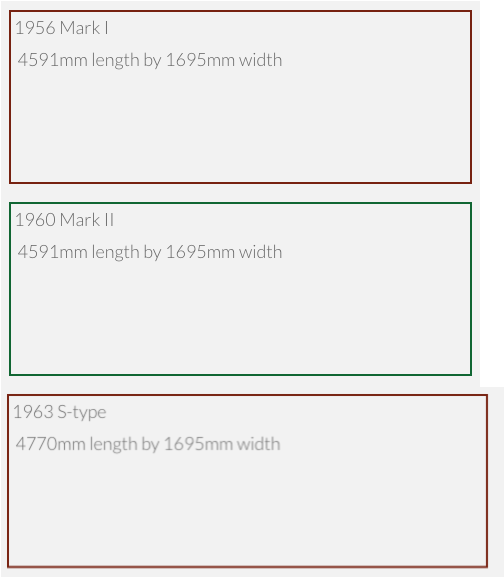
The XJ series is 16″ longer than the Mk1/Mk2 and related models, but most of the added inches are in the rear boot area; the engine bays are about the same length.

Mk2 vs XJ6 SWB profile shows most of the added length is in the boot area
Trim differences
The Mk1 has oval turn indicator lights on the leading front face of the wing and 1950s style window openings.

Jaguar Mark I (Mk1) with larger bumper and oval turn signals; windows are smaller
The Mk2 sports distinctive marker (running) lights on the top of the left and right wings.
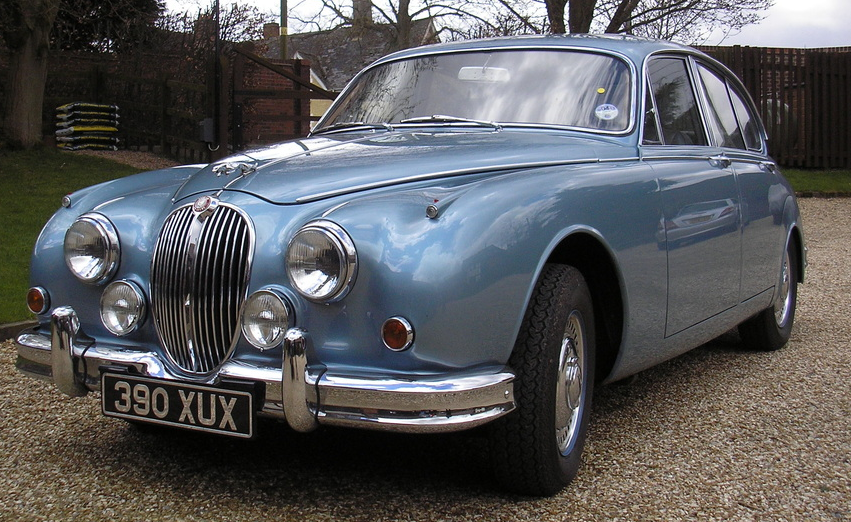
Jaguar Mark II (Mk2) with wing marker lights and round turn signals

Jaguar 240/340 has smaller bumpers but otherwise nearly identical to the Mk2

Daimler V8 with different grille design but otherwise similar to Mk2
The 3.8S (S-type) looks more “modernized” with smaller bumpers, lowered markers, recessed headlights, and a longer streamlined body.

Jaguar S-type has smaller bumpers like the 240/340 and lowered side marker lights
The 420 departs significantly from the Mk1, Mk2 and 3.8S front-end design, but shares other styling points with the 3.8S.
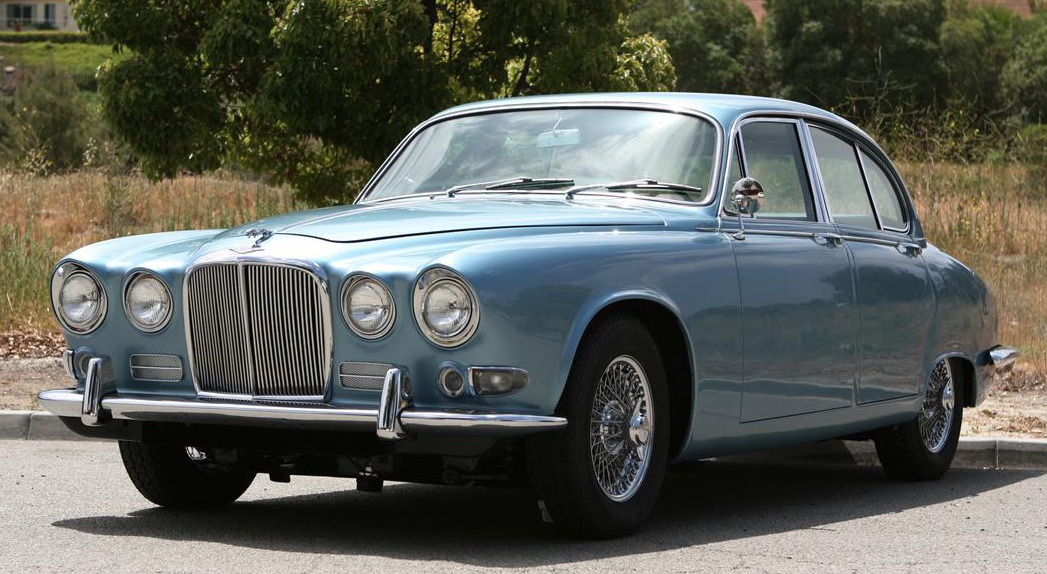
Jaguar 420 departs from the rounded grille design
The Series 1 XJs replaced the early saloons with a streamlined body and flat front-end similar to the 420.
The later XJC coupes follow the XJ basic body style (that echoes the 420 somewhat) in a Series 2 front-end design.

Jaguar XJC V12 5.3L RHD example with European bumpers
Rear suspension differences
The Mk2 uses leaf spring suspension with shock absorbers in a live axle configuration. In 1961, Jaguar pioneered independent rear suspension technology and it became a restoration aftermarket standard for many non-British cars. The E-type and 3.8S (S-type) and 420 were released with the new IRS. The XJs feature a wider version of the IRS that has since become a favorite.
| Model | Year | Gear ratio | Width |
|---|---|---|---|
| E-type | 1961-75 | 3.07 - 3.31 - 3.54 | 52.0" positraction |
| Mk10 | 1961-75 | 3.54 - 3.77 | 60.5" positraction |
| 3.8S | 1963-68 | 3.54 - 3.77 | 55.0" positraction |
| 420 | 1966-68 | 3.54 | 55.0" |
| 420G | 1966-70 | 3.54 - 3.77 | 60.5" positraction |
| XJ6 4.2 (U.S.) | 1968-85 | 3.31 - 3.54 - 3.77 | 61" |
| XJ6 2.8 (European) | 1968-85 | 4.09 - 4.55 | 61" |
| XJ12 | 1972-85 | 3.31 | 61" positraction |
| XJ6/12 Series 3 | 1979-92 | 2.88 - 3.07 | 61" |
| XJS | 1975-96 | 2.88 - 3.07 - 3.54 | 61" positraction |
Series 1 XJs were initially fitted with the 3.54 ratio which was subsequently lowered to 3.31 in 1969 for U.K. domestic models; U.S. exports apparently retained the 3.54 ratio. The higher ratio U.S. cars could achieve greater top speeds, an important marketing feature.
Comparison of XJ series models
The Series 1 XJ, manufactured from 1968 to 1973, inherited the independent rear suspension design of the 3.8S and 420 saloons, as well as the all-disc brake configuration of the earlier models. The XJ is slightly larger than the S-type mostly due to the wider track IRS implementation. The front bonnet flips up like the E-type. European cars shipped with 7″ headlamps (these can be easily retrofitted) but US models had undersized 5.75″ ones.
Front-end trim variation
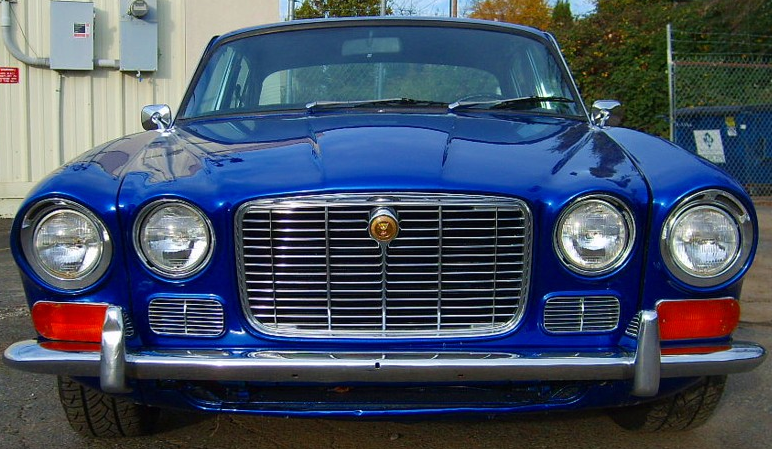
Series 1 XJ6 repainted in Viper GT Blue with low bumper and smaller 5.75″ US headlamps
In 1973 the Series 2 raised the front bumper, modified the main grille while adding a secondary grille below the bumper, a subtle change that moved away from the 1960s classic front-end appearance.

1976 XJ6 Series 2 with larger 7″ headlamps, raised bumper and modified grille
The Series 2 suffered under the British Leyland labor strife that resulted in seemingly endless quality problems, from wiring faults to air conditioning issues.
In 1979 the Series 3 restyled the cabin top to incorporate more glass with narrower door frames, and the front-end added thick rubber bumpers with a simplified grille without side vanes.
Rear-end trim variation
XJ Series 1 versus XJC Series 2 profile
The XJ Series 1 maintained the front and rear quarter windows of the earlier classic saloons while the XJC minimized chrome surrounds. However, only the front quarter window opens with a round knob; the rear one is fixed.
XJ6 versus XJC dashboard
The primary difference between the XJ6 Series 1 and XJC Series 2 dashboards is the center treatment; small diameter instruments and switches on the XJ6 versus a large (and rather ugly) air vent on the XJC. As a result, the driver side of the XJC contains all the instrumentation, perhaps a more efficient configuration, but also somewhat crowded in appearance.
The XJC 1970s style dash reflects a more angular design, a reflection of the “mod” vision of that era, that now seems staid and out-of-date. The XJ6 dash, in contrast, still echoes the classic perspective with rounded shapes and the same basic orientation of small gauges and switches as the early Mk1/Mk2 saloons.
British Leyland quality reductions are also evident in the mid-1970s. Gone is the burl walnut veneer of the Series 1 facia boards; most of the Series 2 cars appear to have a cheaper low grain veneer. Of course, this inferior wood can be upgraded during restoration.
XJ door variations
Early XJ6s came with standard manual roll-up windows and thus the interior front door panel had three controls: a round knob to open the front quarter window, the roll-up handle, and the door open-close-lock rectangular inset mechanism.
With the electric window option, the door panel is simplied — only two controls — and window control is moved to the center console.
The XJ6 rear door has no quarter window opening knob because the window is fixed. Manual windows have a handle; electric versions are controlled from the front console.
Without quarter windows, the XJC has a large door panel typical of 2-door coupes and only a single control mechanism.
Lacking the B/C pillar anchor of other saloons, fitting the 3-point seat belt in the XJC is awkward. The rear seat belt attaches under the arm rest.
Series 1 model changes
- Oct 1968: Jaguar XJ6 2.8 and 4.2 introduced
- Jan 1969: 4.2L axle ratio reduced from 3.54 to 3.31 and 2.8L from 4.27 to 4.01 (except USA/Canada)
- Early 1969: Curved exhaust tailpipes replace straight
- Aug 1969: Front seat headrests available as option
- Oct 1969: Daimler Sovereign 2.8 and 4.2 introduced
- Dec 1969: Borg-Warner Model 12 replaces Model 8 automatic gearbox on 4.2s (2.8s had model 35)
- May 1970: Fresh-air vents to front footwells fitted with air intakes above headlights
- May 1970: Black bezels replace chrome for instruments, switches and vent surrounds
- Jan 1970: 2.8L engines uprated pistons
- Oct 1970: Front wheel arch lips altered to give more clearance over tires
- Mar 1971: Rear bumper changed from 1- to 3-piece due to safety regulations
- Mar 1972: Standard 2.8 model dropped
- Jul 1972: Jaguar XJ12 introduced
- Aug 1972: Daimler Double Six introduced
- Sep 1972: Vanden Plas Double Six long-wheelbase introduced
- Oct 1972: Long-wheelbase models badged as XJ6L/XJ12L
- May 1973: Last UK-market 2.8L produced (European market export continued)
- Aug 1973: XJ Series 1 production ends
Due to improvements in 1968-69, the model years 1970-73 with the 4.2L engine are preferred with the 3.31 rear end ratio; caution regarding model crossover with Series 2 in 1973 should be taken, and a short wheelbase is preferred over the longer version.
Common XJ issues
All the XJs suffer from poor paint quality and rust protection. Specifically, rust first appears in the fender lips under the front turn signals, around the wheels, in the front jacking points, under the rear bumper and mufflers, in the lower seams of the doors and trunk lid.
Another rust-related problem concerns the rear radius arm mounting points, a vulnerable area located below the rear seat that anchors the rear suspension to the body. Any significant rust in this area is sufficient reason to reject an XJ candidate.
Steering rack leaks and worn bushes are common. Polyurethane replacements and a rack rebuild are normally required.
Jaguar’s air conditioning system is generally subpar, with excessive air blowing out of the center vent. Replacement/modification of the A/C system is probably necessary.
Most other major XJ faults (poor cooling, leaks, engine noises, etc.) relate to the original engine and wiring implementation. Since all of these systems would be replaced in a restomod, the long laundry list of issues can be ignored.
Mk2/3.8S versus XJ features
In general, the XJ Series 1 and “C” coupe are more feature rich with power steering, electric windows, and factory-installed air conditioning.
Retrofitting a Mk1 or Mk2 with independent rear suspension is technically difficult unless the transplant approach is used (and even then, it is a challenge since significant metal reinforcements must be welded to the chassis).
The dual tank/pump setup of the XJC must be modified for high pressure fuel injected systems like the General Motors Gen III engine.
All the classic saloons could benefit from a minimum 100HP boost; the XJ6C coupe is especially under-powered given its 4,000 lb. curb weight.
| Feature | Mk2 | 3.8S | 1968-73 XJ |
|---|---|---|---|
| Rear suspension | spring leaf | narrow IRS | wide IRS |
| Front seats | fixed | reclining | fully adjustable with headrest |
| Air conditioning | none | none | factory installed (U.S.)✦ |
| Steering | worm gear | worm gear | power-assisted rack and pinion |
| Electric windows | no | no | yes (U.S)✦ |
| Fuel tank | single | single | dual (12.5 gal each side) & pump |
| Horsepower✦✦ | 120 to 225 | 210 to 225 | 205 (XJ6) to 241 (XJ12) |
✦ option in 1971, not available 1968-70
✦✦ inconsistent data for XJ models ranging from 160 to 244 HP reported
Horsepower requirements
The Horsepower ranges indicate the power required to achieve the Infiniti (10.9 minimum) and Corvette (7.3 maximum) power-to-weight benchmarks. Curb weights to not adjust for lighter aluminum block Gen III replacement engines (about 140 lbs. less than the XK 4.2L straight six).
| Model | Curb weight | Minimum HP | Maximum HP |
|---|---|---|---|
| Mk2 | 3350 | 300 | 460 |
| 3.8S | 3610 | 330 | 500 |
| XJ6 S1 | 3700 | 340 | 510 |
| XJC | 4025 | 370 | 550 |


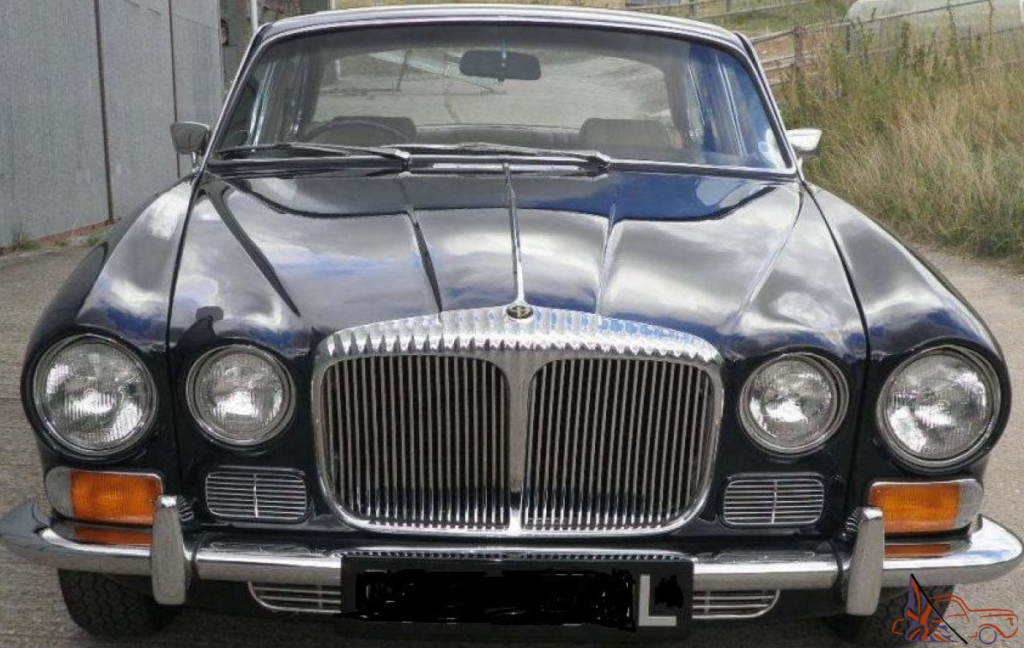



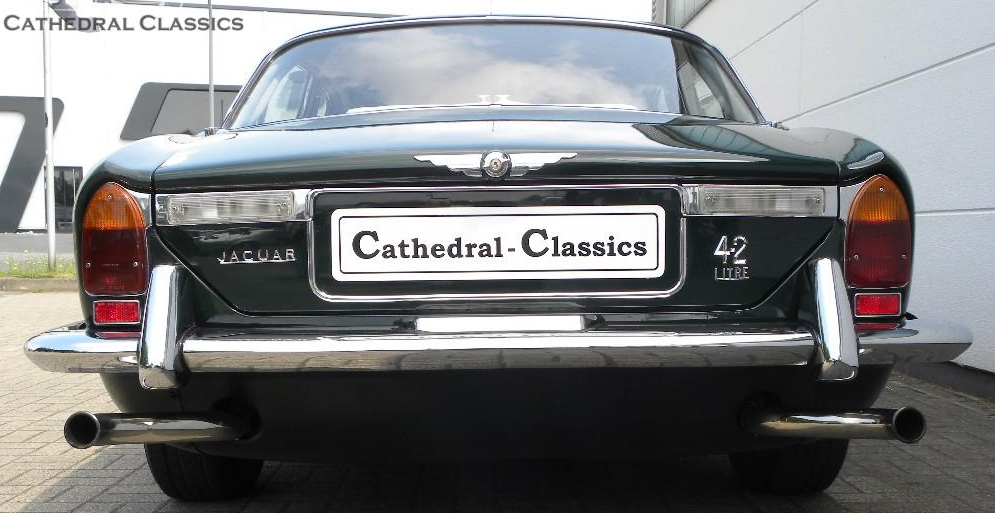
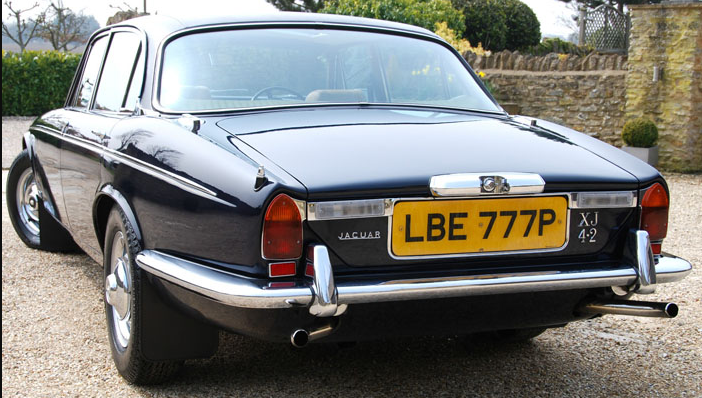



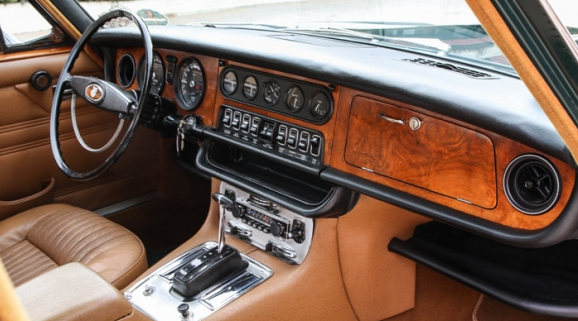

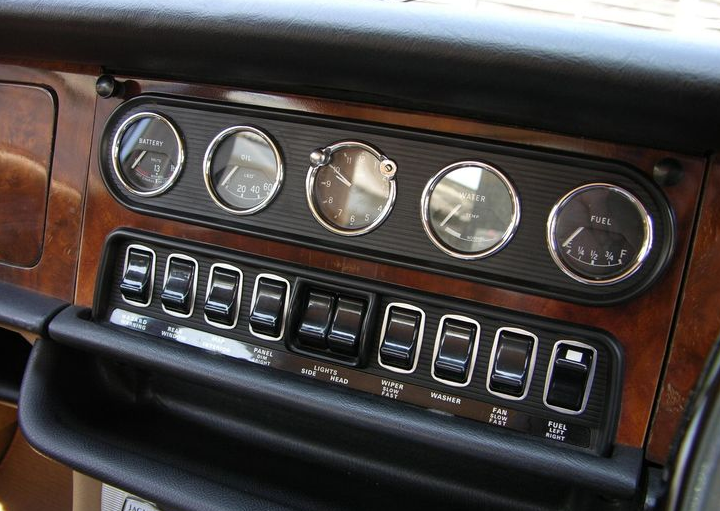


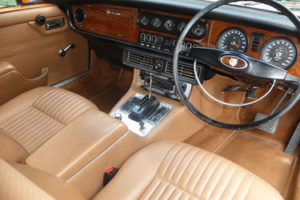
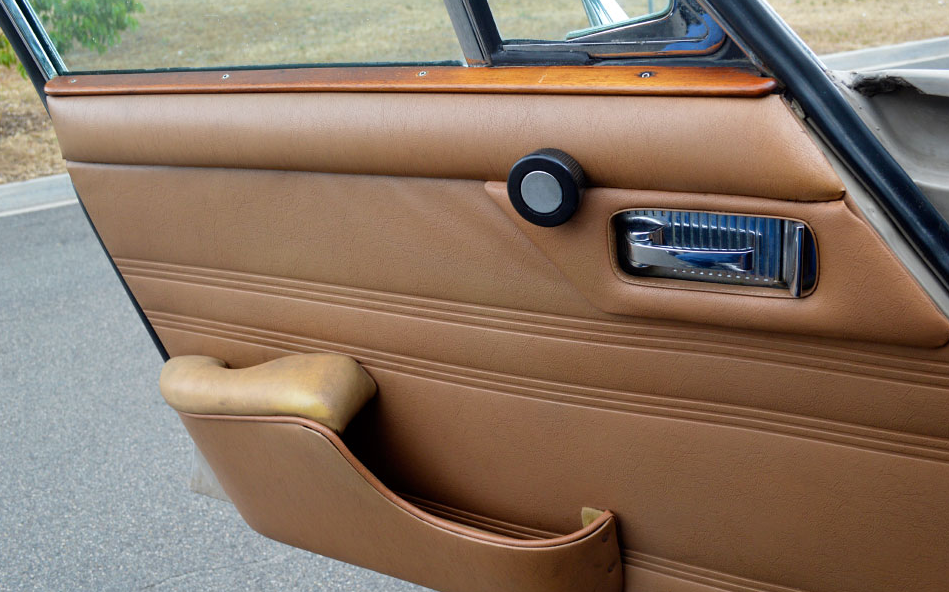




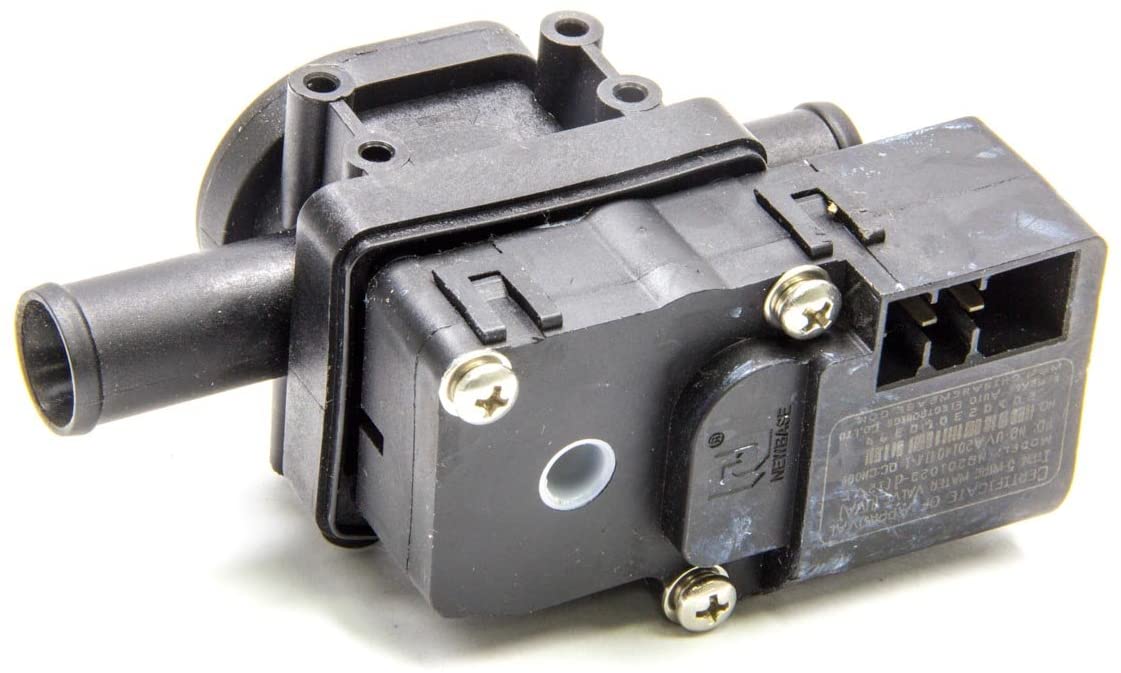
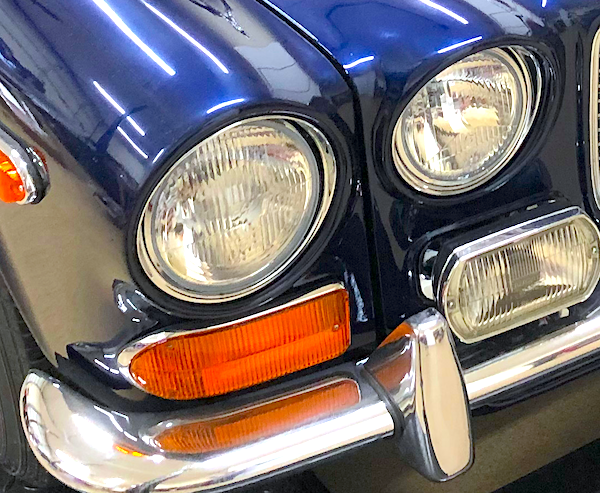


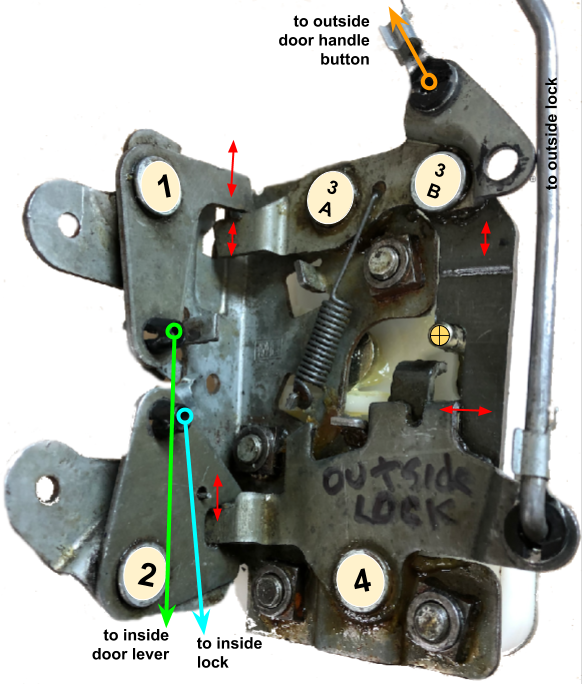
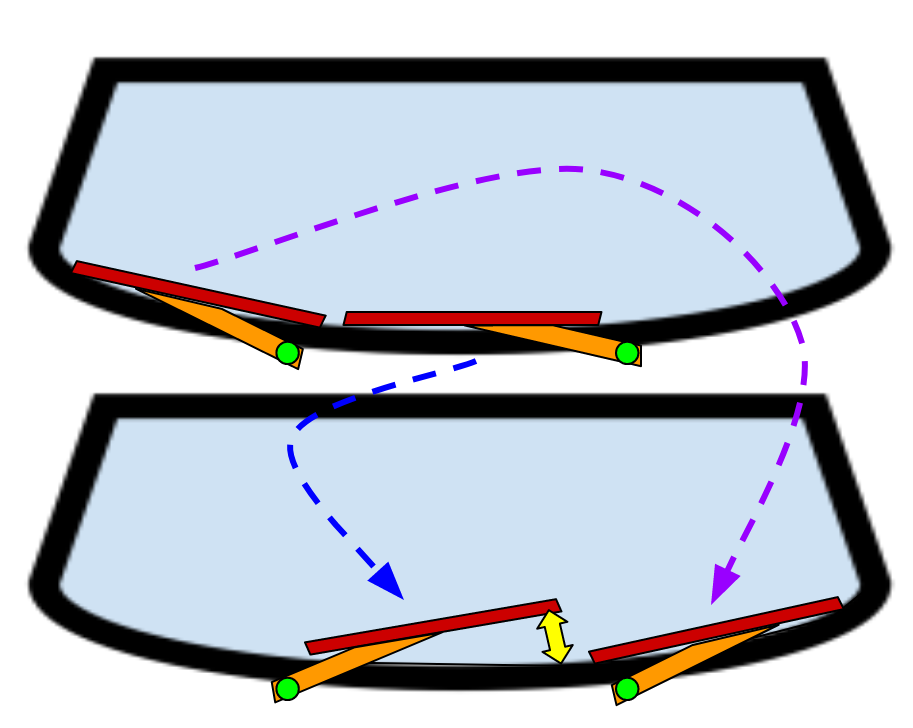

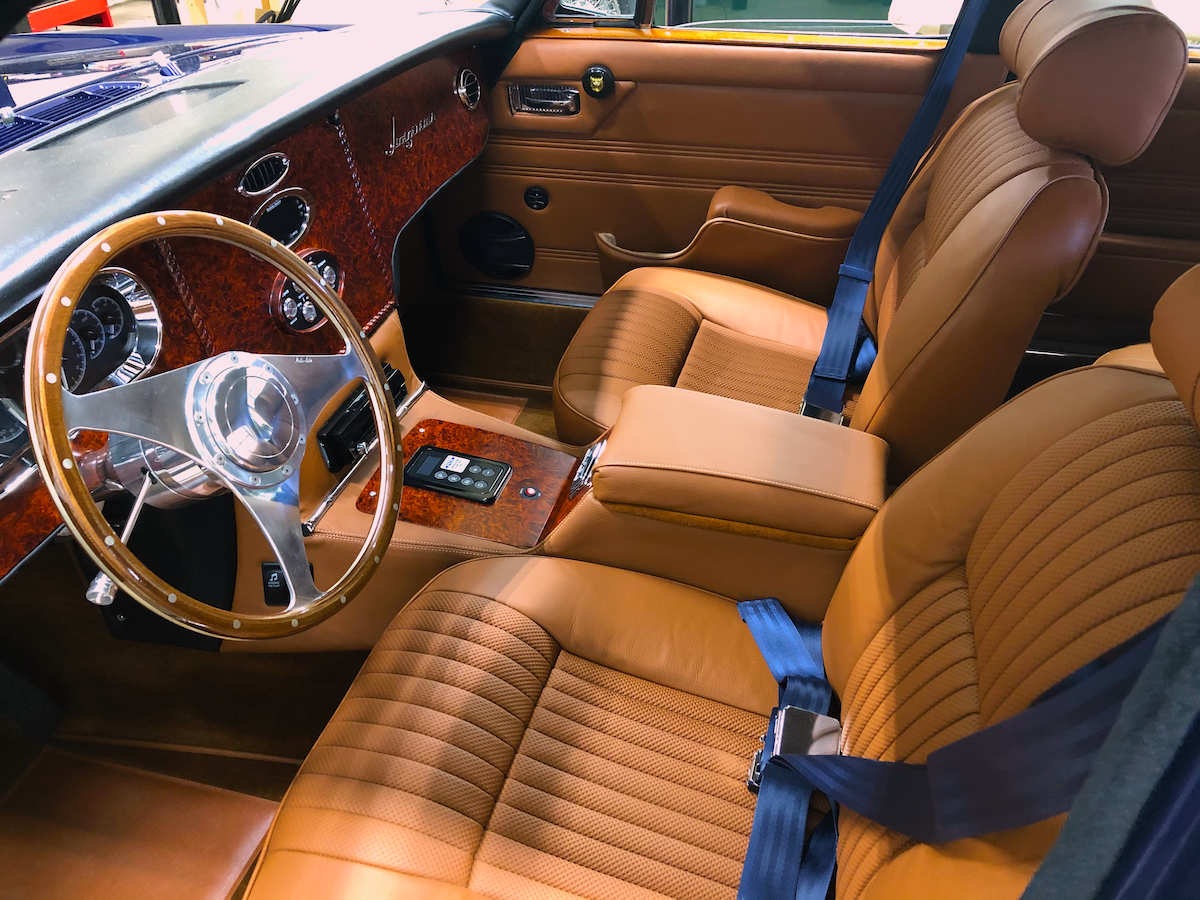
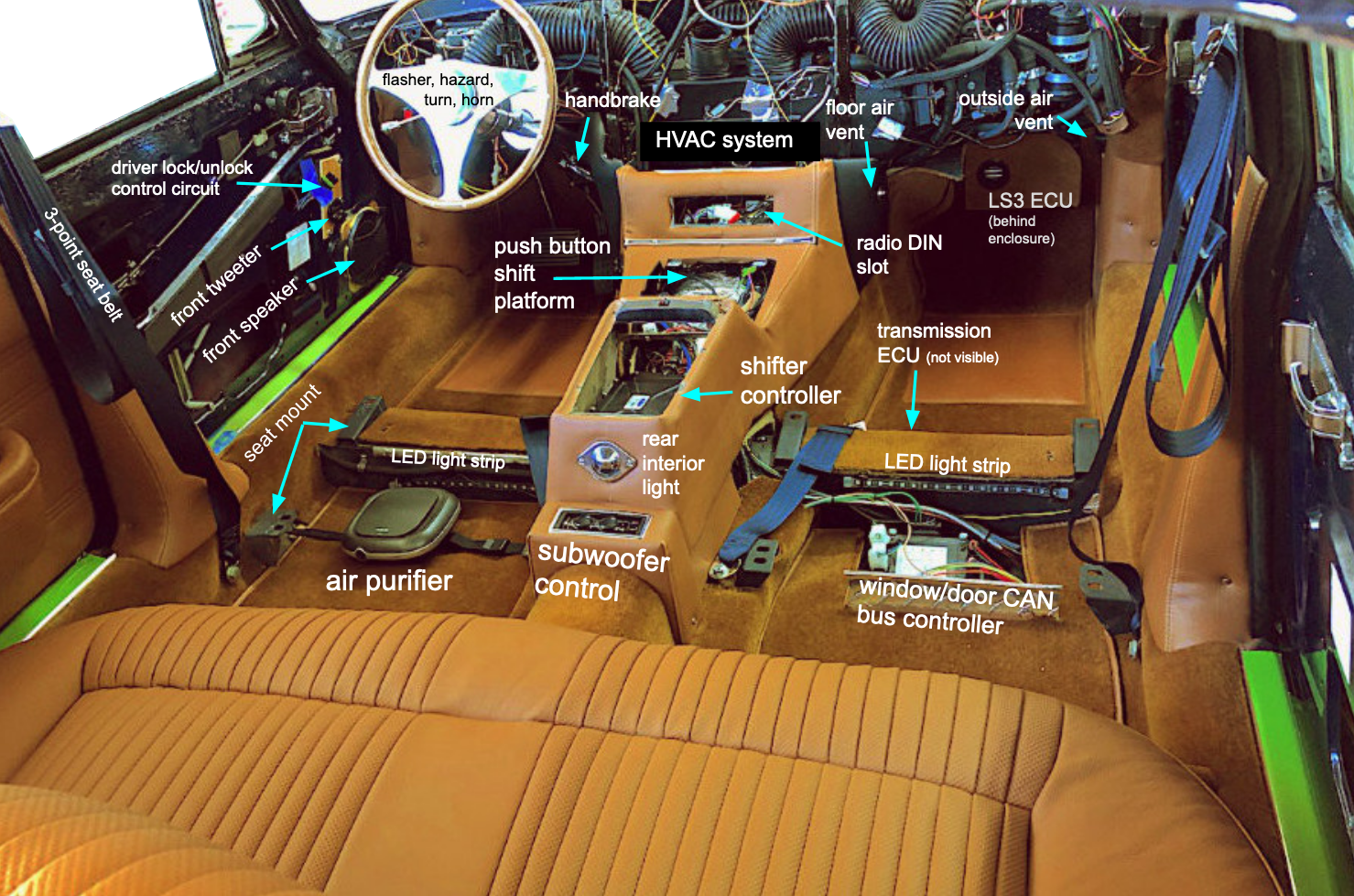
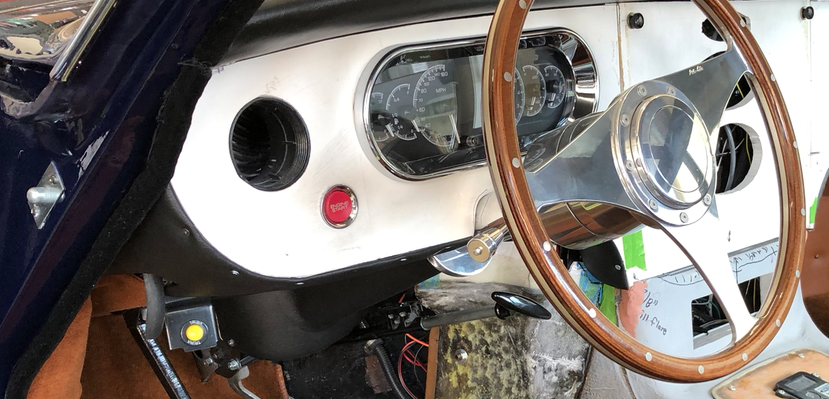
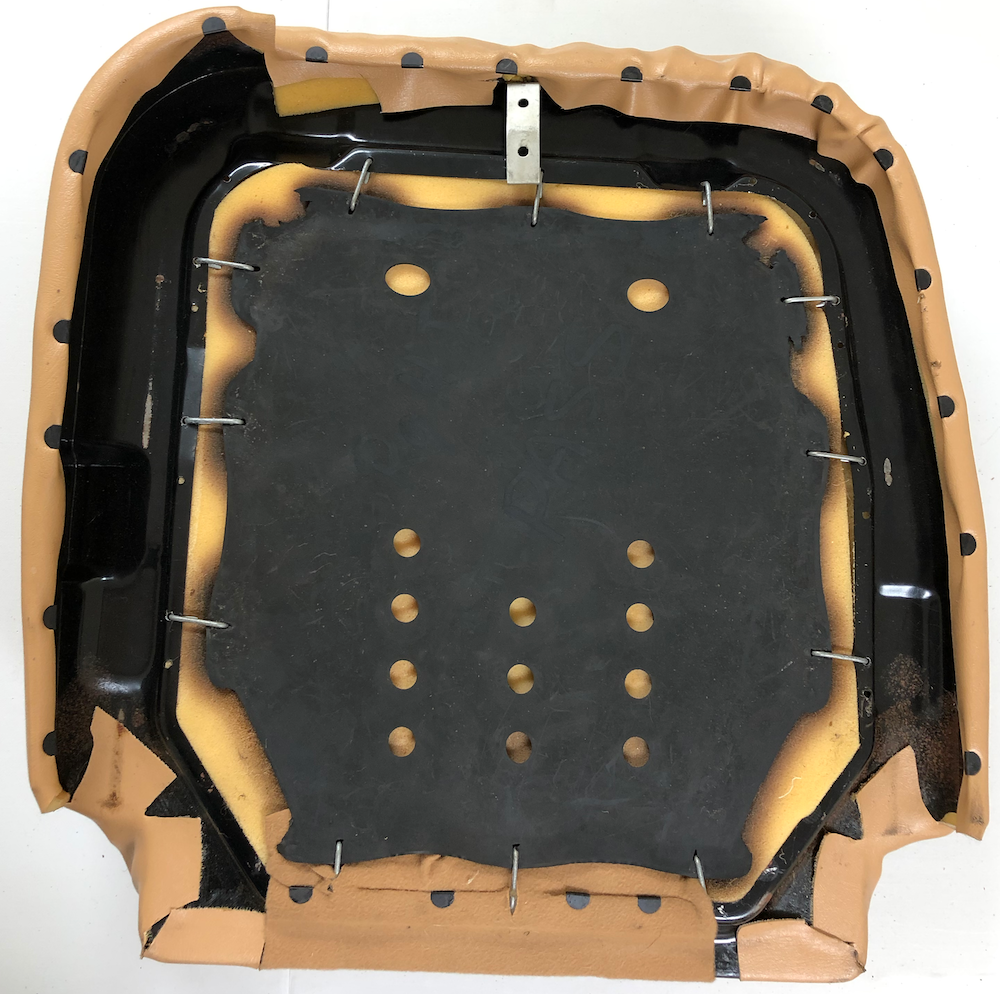






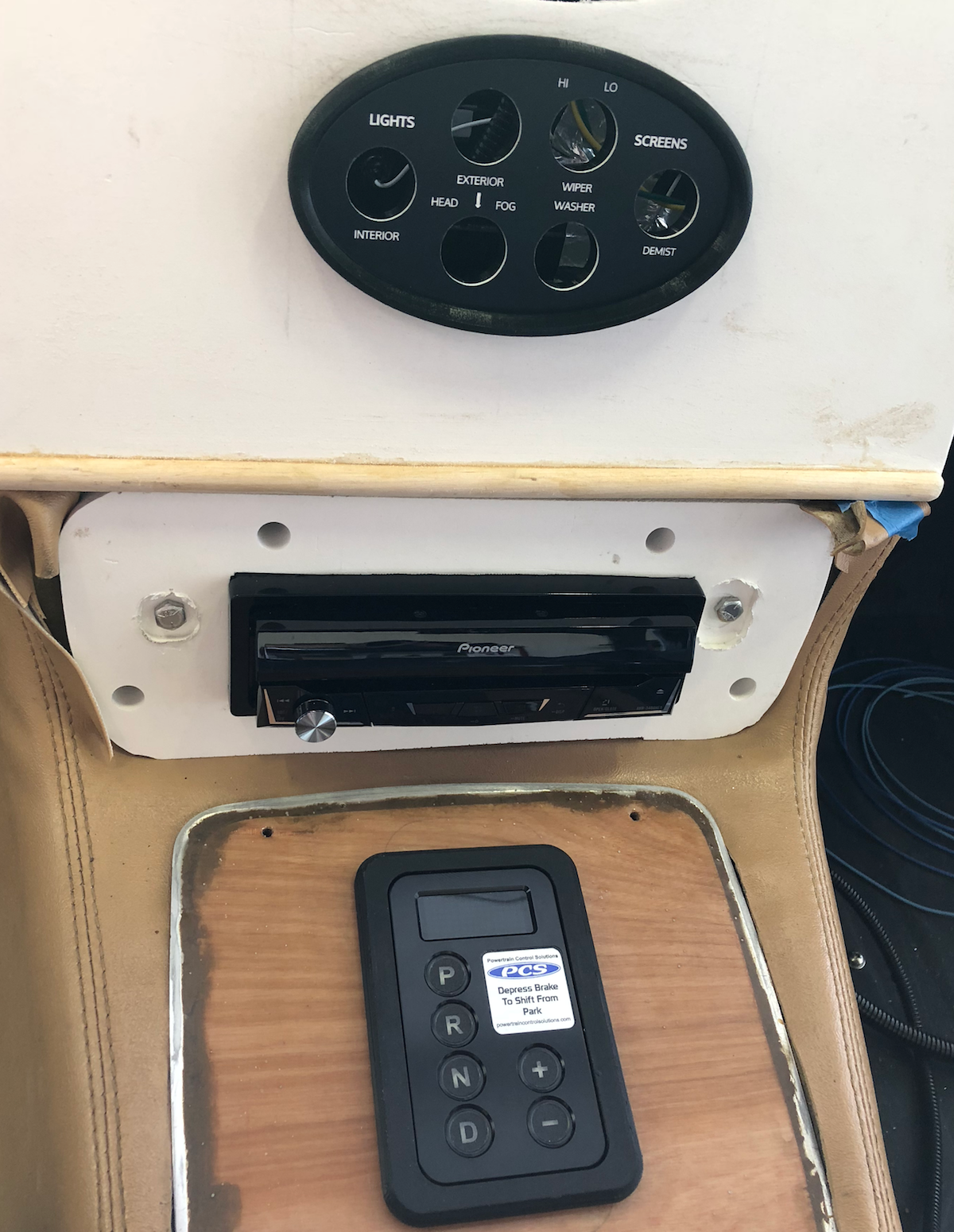

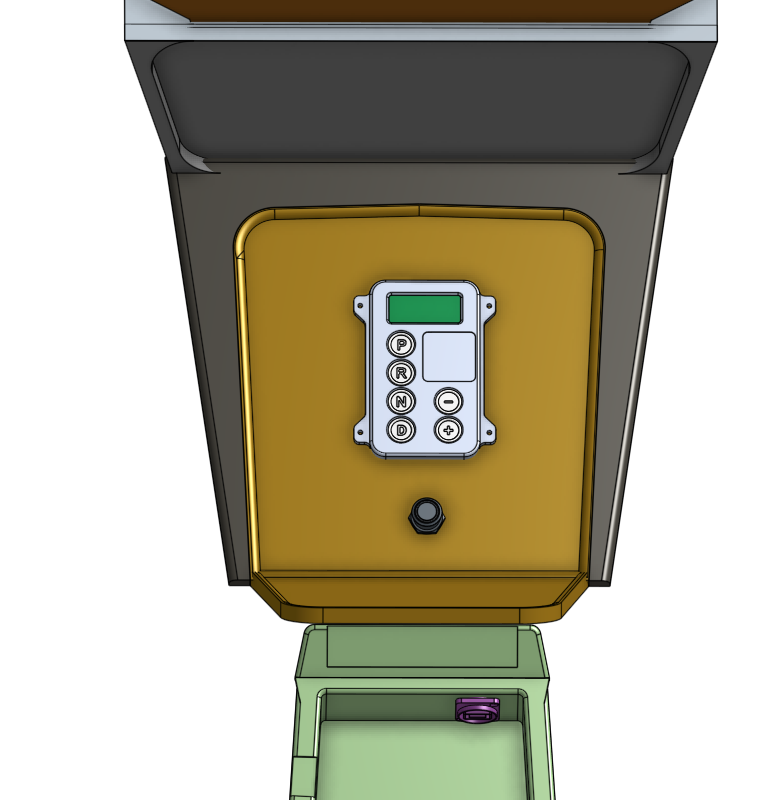
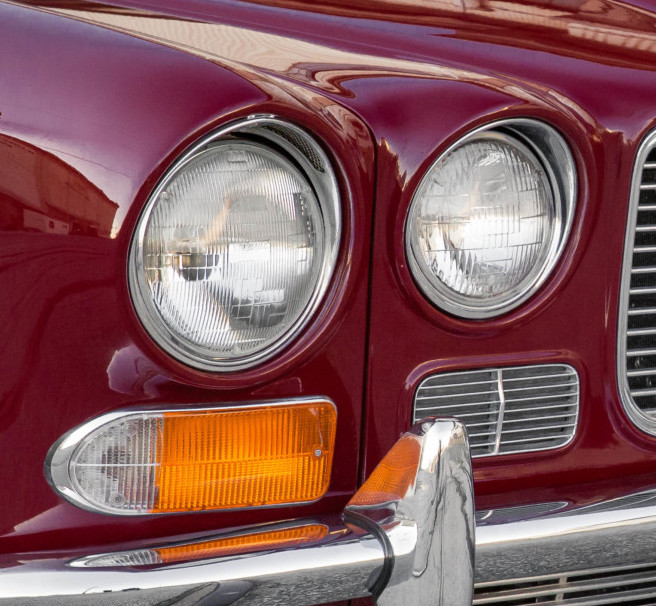

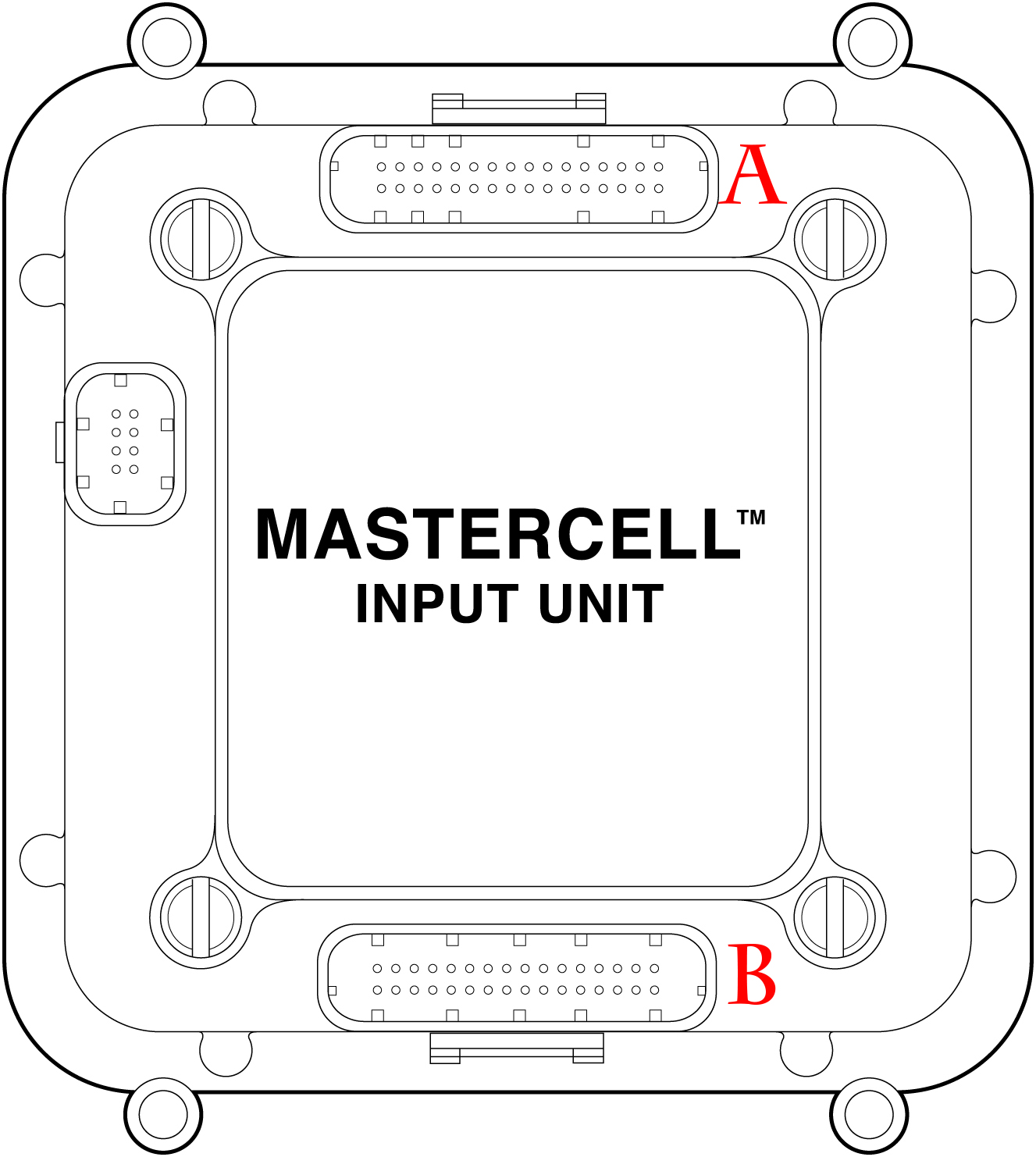





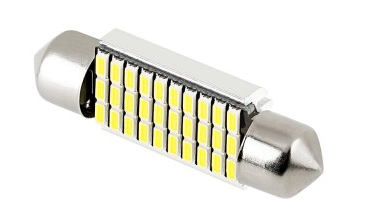
Nice presentation of information, thanks
A wealth of information here. Thanks for the compilation.